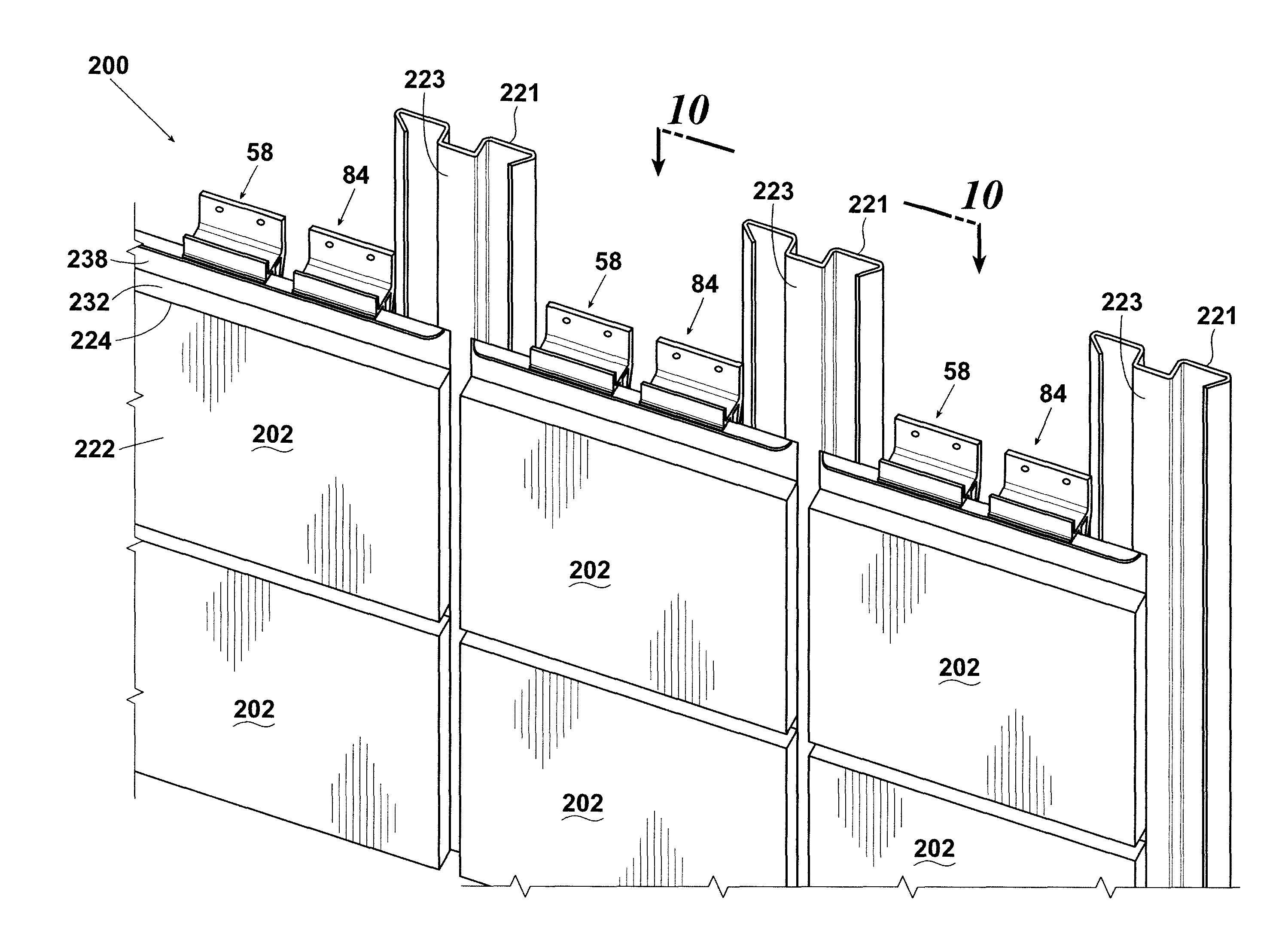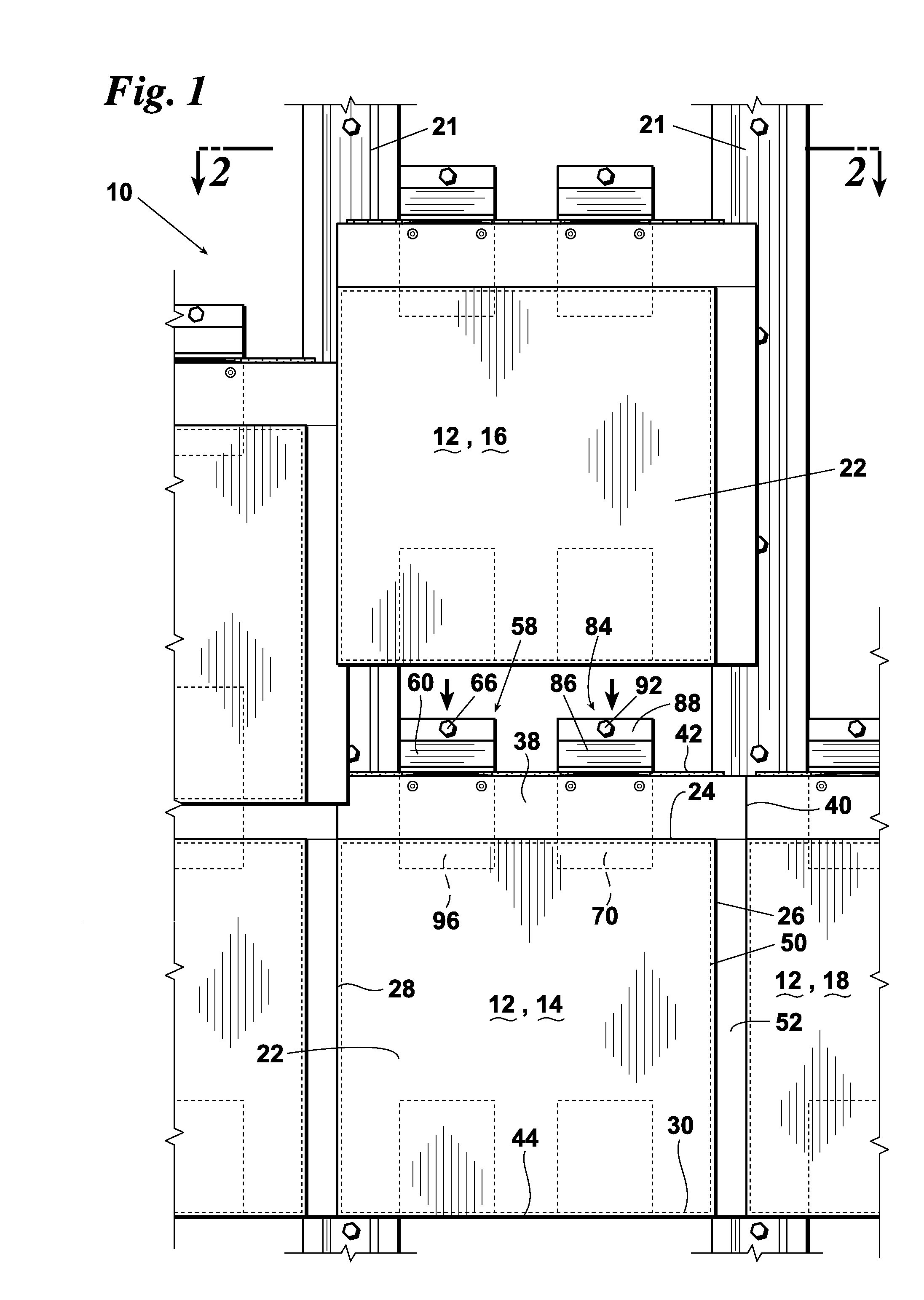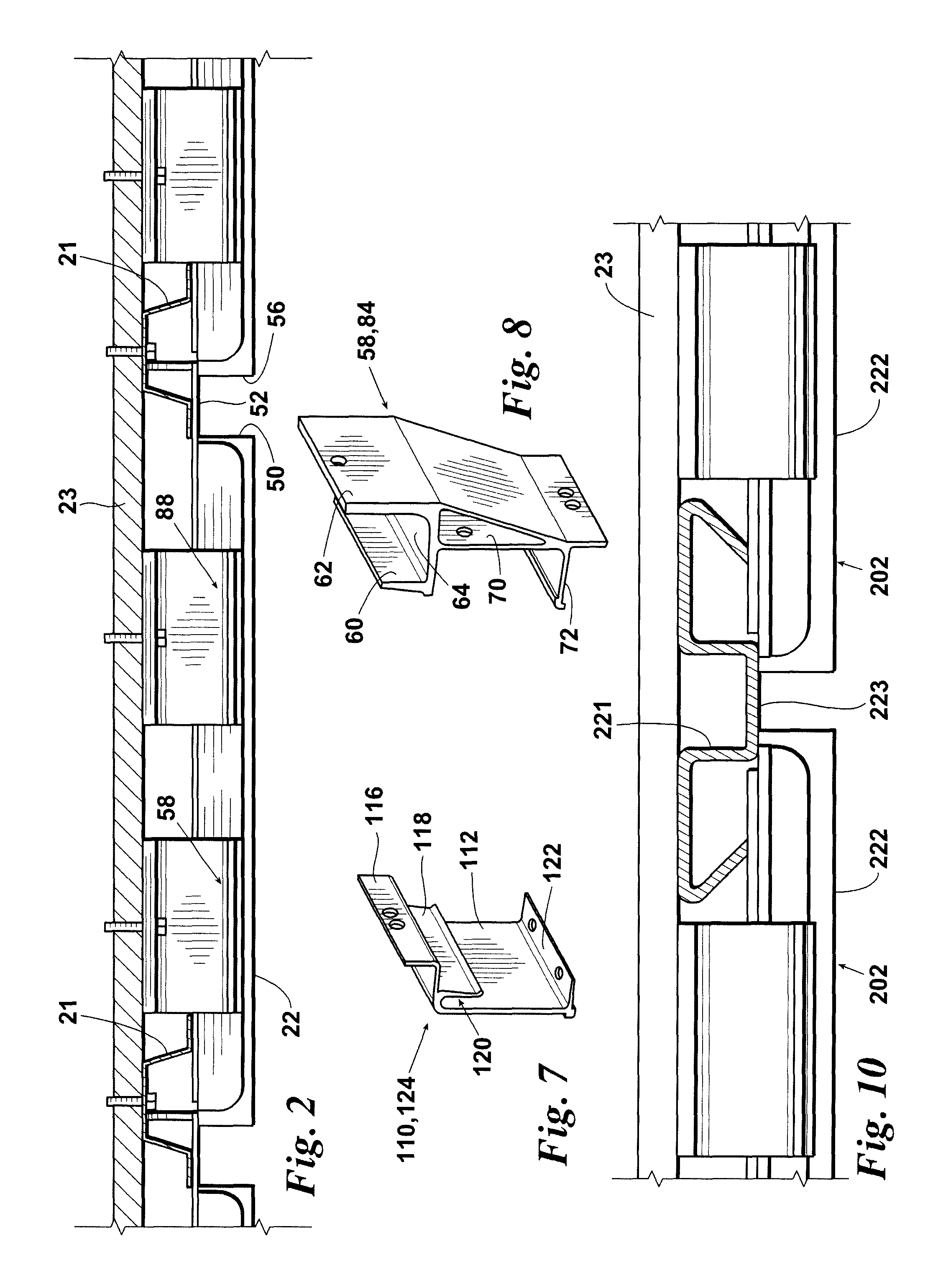Rainscreen attachment system
a technology of attachment system and acm, which is applied in the field of attachment system of acm aluminum panel, can solve the problems of high labor intensity of current acm aluminum panel attachment method, large amount of aluminum extrusion, and high cost of overall system compared to other buildings, and achieve the effect of reducing labor and material requirements and easy attachmen
- Summary
- Abstract
- Description
- Claims
- Application Information
AI Technical Summary
Benefits of technology
Problems solved by technology
Method used
Image
Examples
Embodiment Construction
[0023]A wall mounted panel system designated generally 10 comprises a plurality of panels 12. A plurality of panels 12, for example first panel 14, second panel 16, third panel 18, fourth panel 20. Hat channels 21 are affixed to a wall surface 23 behind panels 12. Hat channels 21 are located behind a joint gap formed by adjacent panels and functions as a vertical gutter for any water that may migrate behind the panels. First panel 14 includes a main vertical member 22 having a top edge 24, right edge 26, left edge 28, and bottom edge 30. Panels 12 are preferably constructed of a composite aluminum skin bonded to a polyethylene core. The aluminum skin material may be machined from one side to facilitate bending of the material, e.g., to create edges 24, 26, 28, and 30.
[0024]Top member 32 (FIGS. 4, 5) has an inside surface and an outside surface. Top member 32 and main vertical member 22 have an inside surface that defines a recess 36 (FIGS. 4-6) where members 22 and 32 join, i.e., wh...
PUM
 Login to View More
Login to View More Abstract
Description
Claims
Application Information
 Login to View More
Login to View More - R&D
- Intellectual Property
- Life Sciences
- Materials
- Tech Scout
- Unparalleled Data Quality
- Higher Quality Content
- 60% Fewer Hallucinations
Browse by: Latest US Patents, China's latest patents, Technical Efficacy Thesaurus, Application Domain, Technology Topic, Popular Technical Reports.
© 2025 PatSnap. All rights reserved.Legal|Privacy policy|Modern Slavery Act Transparency Statement|Sitemap|About US| Contact US: help@patsnap.com



